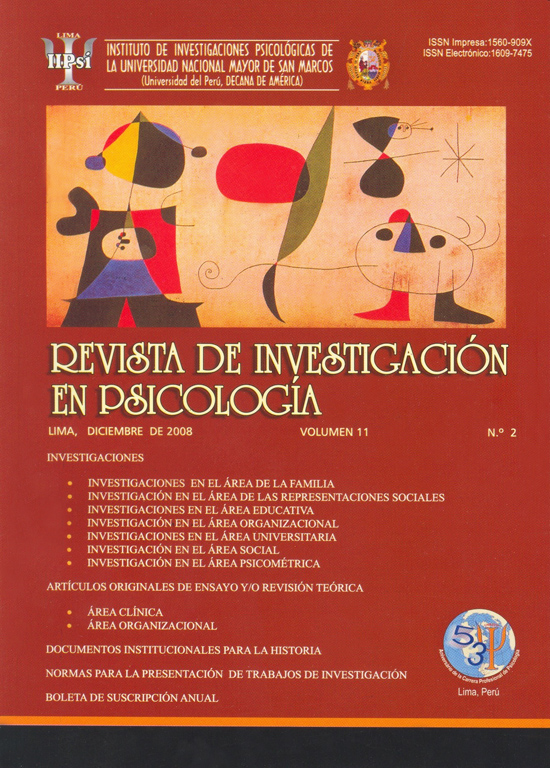Corruption: psychopathology
DOI:
https://doi.org/10.15381/rinvp.v11i2.3849Keywords:
corruption, social psycopathy, anethic behaviorAbstract
It elaborates a phenomenologic systematization of corruption; a serious spiritual morbid process, whose genesis starts since the origin of humanity. Nowadays, it`s pandemic in the anethic and dehumanized society, which is ruled by antivalues. In Peru, corruption was not registered in the Tahuantinsuyo empire. It began in the Colony when the conquerors introduced it into our society; and it has continued through the Republic period until our days. It has become a serious problem to our spiritual health, with a devastating impact in every field of our social reality, until it became a factor of destabilization of the state and ungovernability. It presents a , dysfunctional psicosocial profile of Peruvians; defines corruption as a serious spiritual disturbance, in which the individual suffers of a lack of conscience of the damage caused to his fellowmen. The characteristics, etiology, phenomenology and structure are discussed. Also, the different stages of corruption, its main manifestations, the dysfunctional institutionality in its aberrant forms. The informal institutionality, and hidden institutionality, the eschatological culture has been described, the more common expressions of the language of corruption and the image of corrupted leaders. As well as the syndrome of corrupted politics, its semiology and its consequences. Finally, some reflections of this disturbance and the appropiate alternatives with the purpose of contributing in the eradication of this from the heart of the society.Downloads
Published
Issue
Section
License
Copyright (c) 2008 Martin Nizama V.

This work is licensed under a Creative Commons Attribution-NonCommercial-ShareAlike 4.0 International License.
THE AUTHORS RETAIN THEIR RIGHTS:
a. The authors retain their trademark and patent rights, and also on any process or procedure described in the article.
b. The authors retain the right to share, copy, distribute, execute and publicly communicate the article published in the Journal of Research in Psychology (for example, place it in an institutional repository or publish it in a book), with acknowledgment of its initial publication in the Journal of Research in Psychology.
c. Authors retain the right to make a subsequent publication of their work, to use the article or any part of it (for example: a compilation of their work, lecture notes, thesis, or for a book), provided that they indicate the source. of publication (authors of the work, magazine, volume, number and date).






